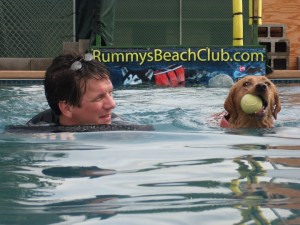Michael Baugh CPDT-KA, CDBC (from All Things Dog Blog)
Dear Trainer:
Skittles’ quirk is her very quiet way of telling us she needs to go outside. I hear her because she generally sticks to me like glue. When I leave the house, Skittles does not do a very noticeable job of getting the message across to other family members. Sometimes we have accidents when I am gone. She will leave her surprises as close to the door as she can get, sometimes right at the door crack as though she wanted to put it outside but could not. Since I cannot make my family hear her quiet whine I do not know what to do. If you have ideas on how to help increase her ability to get their attention I would appreciate it.
————————————————————————-
When I read your very good question I couldn’t help but think of how we humans sometimes behave with each other. I thought specifically of the time I yelled at a very good friend, “What’s the matter with you? Do you think I can read your mind?” He didn’t miss a beat. “I didn’t even know you could read.” He said. It was the rhetorical equivalent of lifting his leg on my sofa and laughing at me.
I’m not suggesting you or your family learn to read Skittles’ mind, not exactly anyway. I do have to admit, however, I’m not a huge fan of teaching dogs to give loud signals when they want to go outside. Certainly, you could teach Skittles to ring a bell on the doorknob with her nose signaling her desire. Clicker training would probably be your fastest path to success. She rings. You click. She goes outside for some treats, fun and potty (we hope).
Here’s the rub. You’d be teaching Skittles to ring the bell when she wants to go outside, not necessarily when she has to go potty outside. I dare not teach this to my dear Stella. She’d be ringing our bell from now until the cows come home (actual cowbell optional). It’s bad enough that she stares out the door now with her newly emptied bladder and bowels. I digress. Suffice it to say, the whole bell-to-go-outside thing is a bit of a slippery slope. You may not necessarily be teaching what you want.
My guess is, you just want Skittles to stop doing two things in the house: number one and number two. The idea, of course, is to teach her to hold it until she goes outside. Go there, not here. Teaching potty training is just a matter of setting Skittles up to win. When she’s learning she should always be supervised or safely confined. You should never ask yourself the question, “Where’s Skittles?” (Just call me; I’ll tell you. “She’s squatting in your dining room.”). Supervising means you also go outside with Skittles. Praise and treat her as soon as she’s done eliminating, right then, on the spot.

